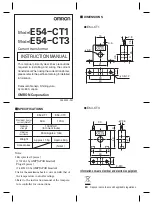
12
MDS 4710/9710 Technical Manual
MDS 05-3305A01, Rev. E
2.7 Using the Radio’s Sleep Mode
In some installations, such as at solar-powered sites, use Sleep Mode to
keep the transceiver’s power consumption to an absolute minimum. In
Sleep Mode, power consumption is reduced to less than 15 mA (nom-
inal), yet preserves the radio’s ability to be brought online quickly.
All normal functions are suspended while the radio is in Sleep Mode.
The
PWR
LED is off, except for a quick flash every 5 sec.
13
--
Do not connect—Reserved for future use.
14
IN
PTT—Push-to-Talk.
This line is used to key the radio with
an active-high signal of +5 Vdc.
15
--
User-Programmable Output 2—
EIA-232-compatible
output controllable though GE MDS’ InSite NMS program.
See “User-Programmable Interface Output Functions” on
Page 39
for details.
16
IN
PTT—Push to Talk.
This line is used to key the radio with
an active-low signal of 0 Vdc.
17
--
Do not connect—Reserved for future use.
18
OUT
Accessory Power.
Unregulated Output. Provides a
source of input power for low current accessories.
Excessive drain on this connection trips the self-resetting
fuse F1 on the transceiver PC board. The voltage at this
pin matches the input voltage to the transceiver.
19
OUT
9.9 Vdc Regulated Output.
Provides a source of
regulated voltage at 100 mA for low power accessories.
20
--
Do not connect—Reserved for future use.
21
OUT
RSSI—Received Signal Strength Indication.
Connect a
DC voltmeter to this pin to read the relative strength of the
incoming signal.
Figure 8 on Page 15
shows RSSI vs. DC
voltage.
22
--
User-Programmable Output 1—
CMOS-compatible
output controllable though GE MDS’ InSite NMS program.
See “User-Programmable Interface Output Functions” on
Page 39
for details.
23
IN
Diagnostic Channel Enable.
A ground on this pin causes
the radio’s microcontroller to open the DB-25 DATA
INTERFACE for diagnostics and control instead of the
normal RJ-11 DIAG connection.
24
--
Do not connect—Reserved for future use.
25
OUT
Alarm.
A logic low (less than 0.5 Vdc) on this pin indicates
normal operation. A logic high (greater than 4 Vdc)
indicates that some alarm condition is present. This pin
can be used as an alarm output, provided the internal
series resistance of 1 k
is considered.
Table 6. DATA INTERFACE Connector Pinouts (Continued)
Pin
Number
Input/
Output
Pin Description
















































